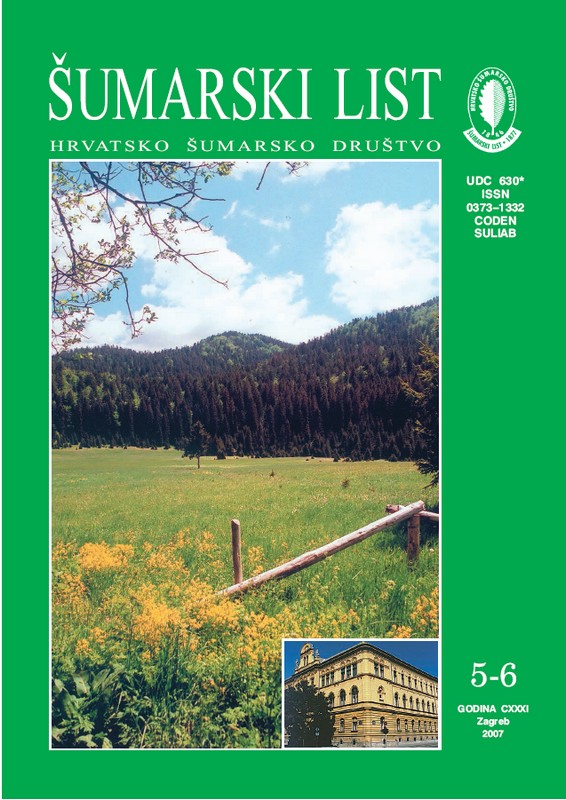
broj: 5-6/2007
pdf (24,3 MB) |
|
||||||||||||||
| IZVORNI ZNANSTVENI ČLANCI | ||
| Oršanić, M., D. Drvodelić, I. Kovačević | UDK 630* 232.3 (001) | |
| Nursery Production of Black Walnut (Juglans nigra L.) Seedlings pdf HR EN | 207 | |
| Prka, M., A. P. B. Krpan | UDK 630* 525 (001) | |
| The Problem of Establishing the Assortment Structure of Even-Aged Beech Stands pdf HR EN | 219 | |
| Ballian, D., F. Bogunić, G. Božič | UDK 630* 165 (001) | |
| Genetic Variability of Norway Spruce (Picea abies /L./ H. Karst.) in the Bosnian Part of the Dinaric Mountain Range pdf HR EN | 237 | |
| Summary: In this study we have carried out the molecular genetic identification of a part of natural populations of spruce in Central Dinaric Alps, in a broader area of Bosnia and Herzegovina, with the approve isoenzyme markers.By usage of 13 enzyme systems we studied the genetic variability at the level of biochemical markers. In the studied populations we obtained high values of heterozygosis which proves that the studied populations, over the adaptation period in diverse ecological circumstances, have not lost much of their adaptability. Therefore, the populations from this area showed better adaptability than the populations from central European area, since they possess higher genetic variability, with the exception of the population of Vlašić, which by its genetic structure shows it does not belong to the autochthonous genetic resources of spruce from Bosnia and Herzegovina. We carried out the analysis at 20 polymorphous loci, with 73 allele, and we obtained an average number of analyzed allele per locus, which varied between 1,80 and 2,60.The analysis thus confirmed the existence of major variability within populations, and for gene locus GOT – C the existence of clinal variability. The genetic multi-loci diversity varied between 27,5 and 37,0, and the gene pool diversity from 1,277 to 1,380, while a mean allele distance varied from 0,18 % to 2,06 %, thus confirming that there exists the relationship between genetic and geographic distances between the studied populations, with the exception of Vlašić. In order to preserve the natural genetic resources of spruce in Bosnia and Herzegovina it would be necessary to establish a dense network of gene banks in situ and ex situ (seed systems, seed zones and seed plantations), necessary to preserve the genetic diversity within populations. Based on the studies that were carried out, it would mean that each significant ecological niche for spruce should have its gene bank with corresponding number of units, in order to preserve ecological and physiological identity of the populations. In management of natural spruce forests, and their renovation, an advantage should, however, be given to their natural renewal, with constant monitoring of the genetic structure, which would enable us to undertake timely measures in preservation of optimal natural genetic diversity which is typical for each population. Key words: isoenzyme; Norway spruce (Picea abies /L./ H. Karst.); populations; variability | ||
| PRETHODNO PRIOPĆENJE | ||
| Čavlović, J., K. Teslak, M. Božič, D. Kremer, Z. Spajić | UDK 630* 560 (Juglans nigra L.) | |
| Growth and Increment of Black Walnut (Juglans nigra L.) in Eastern Region of Croatia pdf HR EN | 247 | |
| PREGLEDNI ČLANCI | ||
| Margaletić, J., M. Grubešić, T. Kalvi, G. Videc | UDK 630* 450 + 451 | |
| Influence of European Beaver (Castor Fiber L.) on the Forest Ecosystem of the Management Unit “Turopoljski Lug” pdf HR EN | 257 | |


